
There are many palaces throughout Portugal. The list is incomplete.
Contents
- Alentejo
- Beira
- Douro Litoral
- Minho
- Estremadura
- Trás-os-Montes e Alto Douro
- Azores and Madeira Archipelagos
- References

There are many palaces throughout Portugal. The list is incomplete.









The Ducal Palace of the Braganza or Palace of the Dukes of Braganza is a medieval estate and former residence of the first Dukes of Braganza, located in the historical centre of Guimarães, in the north-western part of Portugal.
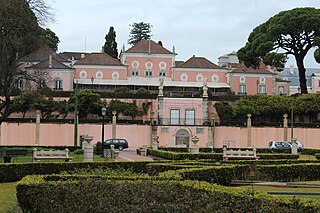
The Belém Palace, formally the National Palace of Belém,, is the current official residence of the president of the Portuguese Republic, the head of state of Portugal. Located in the Belém District of Lisbon, the palace's main façade fronts the Praça Afonso de Albuquerque, facing the Tagus River. A former residence of the Portuguese royal family, the Belém Palace complex is made up of various buildings, wings, courtyards, and gardens, built variously from the 18th to 21st centuries.

Belém is a freguesia and district of Lisbon, the capital of Portugal. Belém is located in western Lisbon, to the west of Ajuda and Alcântara and directly east of Lisbon's border with Oeiras. Belém is famous as a museum district, as the home of many of the most notable monuments of Lisbon and Portugal alike, such as the Belém Tower, the Jerónimos Monastery, the Padrão dos Descobrimentos, and Belém Palace. The population in 2011 was 16,528.
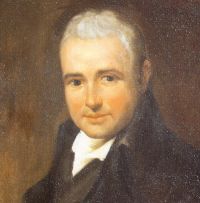
Domingos António de Sequeira was a famous Portuguese painter at the Royal Court of King John VI of Portugal.

The Palace of Ajuda is a neoclassical monument in the civil parish of Ajuda in the city of Lisbon, central Portugal. Built on the site of a temporary wooden building constructed to house the royal family after the 1755 earthquake and tsunami, it was originally begun by architect Manuel Caetano de Sousa, who planned a late Baroque-Rococo building. Later, it was entrusted to José da Costa e Silva and Francisco Xavier Fabri, who planned a magnificent building in the modern neoclassical style.

São Domingos de Benfica is a freguesia and district of Lisbon, the capital of Portugal. Located in northern Lisbon, São Domingos de Benfica is east of Benfica, south of Carnide, west of Alvalade, and north of Campolide. The population in 2011 was 33,043,
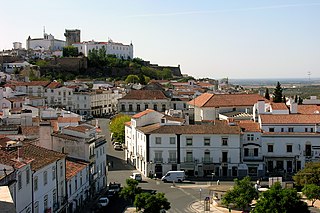
Estremoz is a municipality in Portugal. The population in 2011 was 14,318, in an area of 513.80 km². The city Estremoz itself had a population of 7,682 in 2001. It is located in the Alentejo region.

The Bemposta Palace, also known as the Paço da Rainha, is a neoclassical palace in the area of Bemposta, now the civil parish of Pena, in Lisbon. It was originally built for Queen Dowager Catherine of Braganza on her return from London to Lisbon and served for many years as her residence. It was then transferred to the Casa do Infantado, before becoming the residence of John VI of Portugal until his death. After Queen Maria II of Portugal transferred its title to the Army, it became the Portuguese Military Academy.
The Ducal Palace of Vila Viçosa is a royal palace in Portugal, located in the civil parish of Nossa Senhora da Conceição, in the municipality of Vila Viçosa, in the Alentejo, situated about 150 km east of the capital Lisbon. It was for many centuries the seat of the House of Braganza, one of the most important noble houses in Portugal. Braganza was the ruling house of the Kingdom of Portugal from 1640 until 1910, when King Manuel II, titular head of the family, was deposed in the 5 October 1910 Revolution which brought in a Republican government.

The CARRIS Museum is a museum that is open to the public and showcases the history of public transport in Lisbon. It is situated in the civil parish of Alcântara, municipality of Lisbon.
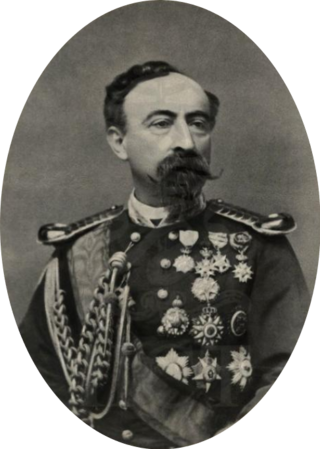
Januário Correia de Almeida, Count of São Januário was a Portuguese colonial administrator, military engineer and a diplomat. He was created Baron of São Januário by King Luís I in 1866, Viscount of São Januário in 1867 and Count of São Januário in 1889. He was born in Paço de Arcos on 31 March 1829 as son of Januário Correia de Almeida and Bárbara Luísa dos Santos Pinto.

The Convent of Santo António da Cidade is a former-convent and public library in the civil parish of Bonfim, in the municipality of Porto, in the Portuguese district of the same name.

The Palácio dos Condes da Guarda is located in Cascais, Lisbon District, Portugal. The building now functions both as the headquarters of the Municipality of Cascais and, on the ground floor, as a museum that explains the history of the town.

Summer architecture was a Portuguese architectural movement originating in the Portuguese Riviera, in the late 19th and early 20th centuries, when the region became a popular resort destination for the Portuguese royal family and the Portuguese aristocracy. The movement is not characterized by any single architectural style or artistic school, but rather unified by common themes, including leisure, wellness, exoticism, and heterotopia.

The Project for the Royal Palace in Campo de Ourique was an ambitious 18th century proposal for a monumental royal palace to be built in the Campo de Ourique neighborhood of Lisbon. Portuguese architect Dionizio de S. Dionizio planned the palace for King Joseph I of Portugal as part of the reconstruction efforts following the destruction of the 1755 Lisbon Earthquake.
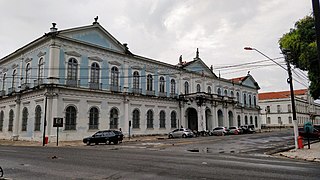
The Palácio Antônio Lemos, also called the Belém Art Museum, is a public building, palace, museum, and the city hall of Belém, built in 1860 by José da Gama Abreu, in the context of the rubber cycle. It is located in the Cidade Velha neighborhood.